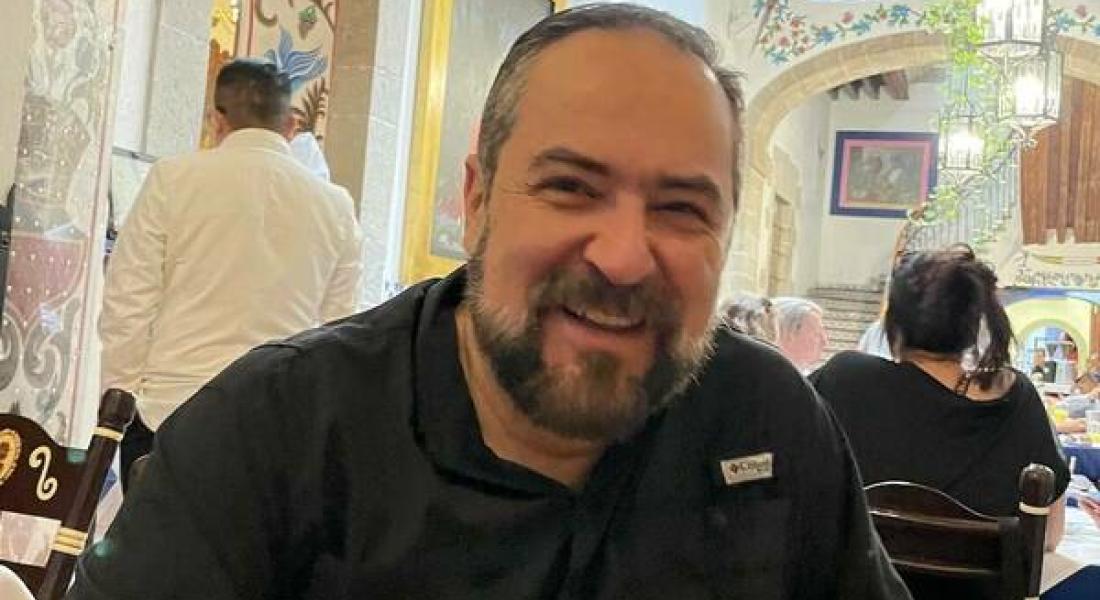
Kellogg faculty fellow, Carlos A. Jáuregui, a professor of Spanish in the Department of Romance Languages and Literatures, has won a Fulbright U.S. Scholar award in support of his research examining the dynamics of monument visibility, memory, and representation in Mexico.
“It’s a great honor and a source of joy and happiness,” he said. “I am an adopted son of the United States and my native country is Colombia, but Mexico holds a special place in my heart.”
The Fulbright-García Robles Social Sciences and Humanities award is intended to foster understanding between the U.S. and other countries, and with it, Jáuregui will work on his project, “Monumental Ways of Forgetting: The Paradoxes of Remembering Hernán Cortés in Mexico (1524-2024).”
Jáuregui finds it fascinating that, for many in Mexico, memorials of Spanish conquistador Hernán Cortés are seemingly nonexistent. Even those who routinely pass by the monuments — as well as reputable Mexican scholars and historians — repeat the fallacy that there are no tributes to Cortés in the country.
Jáuregui pointed out that, in reality, there are multiple monuments of the brutal colonialist, including one riddled with bullet holes known as “Paso de Cortés” in the Izta-Popo Zoquiapan National Park near Mexico City.
“Somebody had taken the time to load a gun and go to a monument and fire into it — a monument that doesn’t exist, according to everybody,” he said.
Alternatively, other citizens actively preserve the rubble of what is mistakenly purported to have been Cortés’ home in Antigua Veracruz, Mexico.
“They keep the ruin a ruin to remember that Cortés has been forgotten,” Jáuregui said. “That simple paradox — the celebration of oblivion — intrigued me.”
For the last 200 years, monuments to Cortés have remained both visible and paradoxically hidden, and Jáuregui, contends that selective forgetting conceals the colonial violence that has shaped Mexican modernity and perpetuates existing structures of domination.
A concurrent professor of anthropology, Jáuregui is also intrigued by how historical narratives of monuments intersect with issues today, including ongoing injustices that marginalize Indigenous and other underrepresented communities, as well as various social movements and protests.
“We have to interrogate their invisibility and propose plausible explanations for it,” he said. “At stake is the central question of how a nation reckons with colonialism and the violence of its past while navigating the complexities of its present.”
Symbolic justice
Cortés is a central figure in Mexico’s violent past. If he were alive today, Jáuregui said, he’d likely be considered a psychopath.
He oversaw several massacres, toppled the Aztec ruler Moctezuma in 1519, and — after a successful Mexican uprising — reconquered and destroyed the city in 1521 with calculated cruelty. Cortés also tortured and ordered the execution of emperor Cuauhtémoc, is suspected of killing his first wife, and poisoned a judge sent to investigate him.
Cortés was so reviled that, when Mexico declared independence more than 250 years after he died, citizens repeatedly tried to desecrate his tomb, and his remains had to be moved several times.
However, there have been recent concerted efforts to rehabilitate Cortés as a historical figure. Many Spanish and some Mexican historians and intellectuals have tried to declare Cortés the father of the Mexican nation. But since gaining independence — particularly after the 20th-century Mexican Revolution and the rise of Indigenism — presenting Cortés in a positive light seems unlikely.
Monuments are often viewed as signs of power and can provide a common symbolic ground to dispute histories and political issues worldwide, Jáuregui said.
However, he noted, most people don’t notice monuments associated with racism and discrimination until present-day conflicts draw attention to them, or rather to what they purportedly represent.
The toppling of a monument frequently signals broader political conflicts around civil rights, land ownership, regime changes, and Indigenous identity, Jáuregui said. Although the phenomenon is not new, he noted the issue recently gained visibility after Minneapolis police killed George Floyd in 2020. That sparked demonstrations and debates on whether to remove statues of public figures associated with racism and discrimination around the world.
Jáuregui said it would be a mistake to think that a controversy about a monument is simply about the physicality of the memorial when, in fact, it signals larger social tensions.
He said matters of symbolic justice are often secondary to more pressing political matters. Yet, today in Mexico and elsewhere, he said it’s easier for those in power to remove controversial monuments and statues than it is to dismantle ongoing injustices.
“For a government to tear a monument down or put it in a museum, it’s way cheaper, in comparison, to addressing things like land ownership, discrimination, and poverty,” Jáuregui said. “I recognize the importance of these symbolic fights, I just don’t think symbolic justice is as important as real justice.”
Product of love
Jáuregui’s multifaceted project will include writing his sixth book, compiling a dossier in the Arizona Journal of Hispanic Cultural Studies, convening a lecture series at the National Autonomous University of Mexico and the Hospital de Jesús, and creating a public exhibition of historic photographs titled In- and Ultra-Visible: Cortés Monuments in Mexico.
To expand the reach of his research, correct the widespread misconception that there are no Cortés monuments in Mexico, and spark a public discussion on the matter, Jáuregui will stage an exhibition at the Pino Suárez subway station in Mexico City. Millions of Metro riders will be able to scan a code with their phone and read succinct descriptions of what have been, in essence, invisible monuments.
Jáuregui said he owes much of his career to Notre Dame and to Mexico; this project is a thank-you to both.
“I want to start paying some debts with my students at Notre Dame who have been interested in this topic and helped me develop ideas,” he said. “And I’m also trying to pay unpayable debts to Mexico and the people of Mexico. I want this to be a product of love.”





